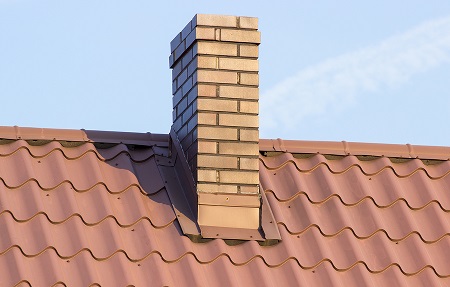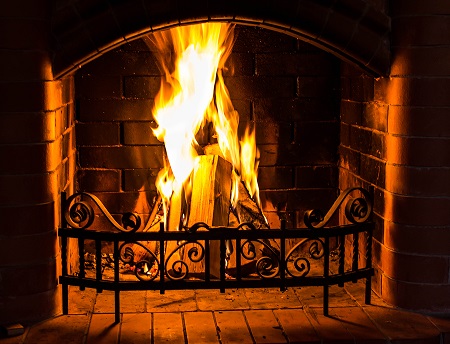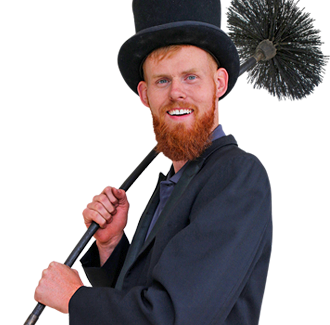Chimney Myths & Misconceptions
 Fireplaces have never gone out of style. They are loved for their architecture, the warmth provided by fires in wintry weather, and the beauty of a mantle crowned with carefully chosen treasures. The chimney doesn’t inspire near so much romance, even though it has the heroic function of keeping homes safe from various dangers. There are actually quite a few misconceptions and blatant myths about chimneys that homeowners need to be aware of.
Fireplaces have never gone out of style. They are loved for their architecture, the warmth provided by fires in wintry weather, and the beauty of a mantle crowned with carefully chosen treasures. The chimney doesn’t inspire near so much romance, even though it has the heroic function of keeping homes safe from various dangers. There are actually quite a few misconceptions and blatant myths about chimneys that homeowners need to be aware of.
Chimney Myth No. 1 – Chimney Cleaning is a Good DIY Project
Cutting household costs is a good thing unless it places the family in potential danger, such as choosing do-it-yourself chimney maintenance. Proper chimney maintenance is a safety issue. Creosote needs to be cleaned from the flue lining because it’s highly flammable and could start a hazardous chimney fire. Creosote can also obstruct a chimney, if cleaning is neglected. Professional chimney technicians have the right tools to clean the chimney thoroughly without causing damage at the same time. One bit of misguided DIY advice homeowners can find on the Internet is to drop a sack of bricks down the chimney to remove creosote. Not only is this unreliable as a cleaning method, it can also cause costly damage. A chimney flue needs to be completely free of cracks and any other type of deterioration, since it protects combustible parts of the home from dangerously high temperatures.
Chimney Myth No. 2 – Fireplaces are Unavoidably Inefficient
While it’s true that conventional masonry fireplaces send at least 90% of the heat up the chimney, there are ways to tremendously improve fireplace efficiency. One of the easiest strategies for converting your fireplace into a better heat source is to install a fireback. A fireback, whether plain or decorative, is a helpful accessory made of cast iron or stainless steel. Simply place it against the back wall of the fireplace. Whether a more effective cast iron fireback or one made with stainless steel, the result will be that significantly more heat will radiate into the room. Another option is to have a fireplace insert installed. With an insert, fires burn hotter and combustion is more complete. If you have a fireplace insert installed, you can depend on your fireplace as a reliable source of supplementary heat in the iciest parts of winter.
Chimney Myth No. 3 – A Chimney Inspection isn’t Needed if the Fireplace is Rarely Used
One of the leading causes of chimney fires is when a fire is lit in a fireplace that hasn’t been used for a long period of time. Homeowners frequently make the mistake of thinking a chimney inspection is unnecessary because there haven’t been any home fires burning. There are many situations that can occur over time that result in an unsafe chimney. Animals build nests in chimneys, creating a dangerous obstruction. Moisture damage is common, and it can cause the chimney structure to deteriorate. Leading chimney safety experts agree that an annual chimney inspection is an important step in safety.
Chimney Myth No. 4 – Burning Pine and other Softwoods Causes Excess Creosote
 There have been ongoing misconceptions that burning softwoods such as pine causes an excess amount of creosote in the chimney lining. Research has been done, and it turns out the type of wood burned is not a factor in creating excess creosote. Instead, it is the type of fires that can cause more creosote buildup. Fires should be hot, and smoldering fires should be avoided. When combustion is more complete, there is less pollution and less creosote is deposited in the lining.
There have been ongoing misconceptions that burning softwoods such as pine causes an excess amount of creosote in the chimney lining. Research has been done, and it turns out the type of wood burned is not a factor in creating excess creosote. Instead, it is the type of fires that can cause more creosote buildup. Fires should be hot, and smoldering fires should be avoided. When combustion is more complete, there is less pollution and less creosote is deposited in the lining.
Have you been operating under misconceptions about your chimney? Contact our chimney professionals today to schedule a chimney inspection or chimney cleaning.








